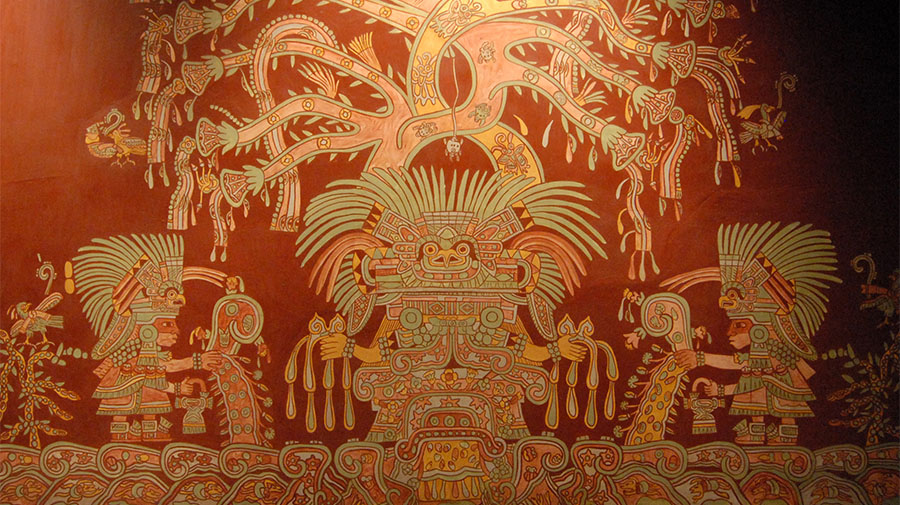Go to Eternal Lies: The Alexandrian Remix
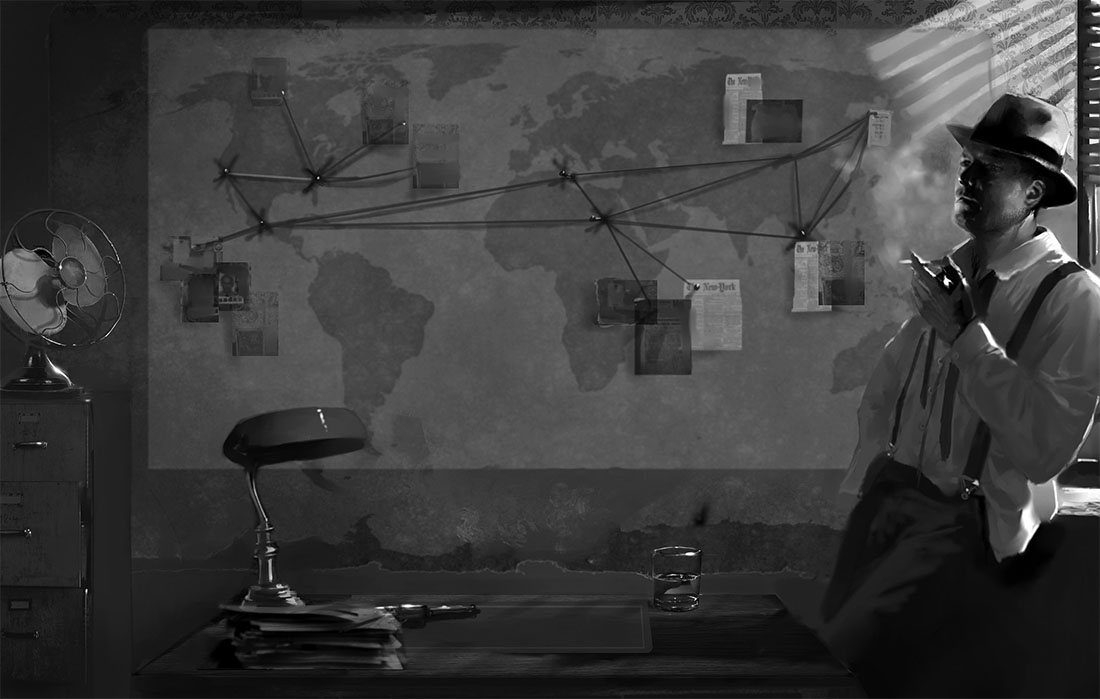
End of the road.
The final count for the Alexandrian Remix of Eternal Lies is:
- 300+ props
- 150+ diorama elements
- 450+ pages
- 130,000+ words
In many ways, this is a campaign that grew out of control. I was wildly over-ambitious in my approach and the result was a lot of stress when it came time to close the deal down the stretch. But the final result was an incredibly intense experience. I doubt that I will ever attempt to run another campaign quite like this one, but I’m glad to have had the experience. And I’m happy to share the experience with you.
THE ORIGINAL PITCH
SETTING: Mormo was invoked in 1924. Cthulhu briefly awoke in 1925. The federal government raided Innsmouth in 1927. Yog-Sothoth nearly broke through the barriers in Dunwich in 1928. This game is about the decade after that. When things got worse.
If you’re familiar with the Cthulhu Mythos, then you’ve got a pretty good idea what’s going on. If you’re not then I recommend checking out these stories:
- “The Call of Cthulhu”
- “The Shadow Over Innsmouth”
- “The Dunwich Horror”
- At the Mountains of Madness
(The last of these is a short novel, but the other three make for quick reading.)
CHARACTERS: You are investigators. As the campaign begins you may or may not be previously aware of the Mythos, but you ARE renowned for your investigating and/or problem-solving abilities. That might just be a quiet reputation among the sort of people who really count; it might be a local renown like that enjoyed by the Great Detective; or it might be the national renown of an Eliot Ness.
On a meta level, it’s important to remember the “investigate” part of your name. When faced with the horrific unknown your response isn’t to run away and pray to your broken gods; it’s to solve the mystery. Your Drive will help you with that.
MY PLAY-THRU
I’m not going to attempt a comprehensive overview of everything that happened in my play-thru of the campaign, but I have had several requests from people who have been interested in how it played out.
The total playing time was 95 hours, split over 22 sessions.
NEW YORK: The PCs made a point of conducting a very thorough investigation in New York before leaving town. They discovered leads that pointed in the direction of Los Angeles, but they decided it still made sense to check out Doug Henslowe in Savannah first.
SAVANNAH: The investigation in Savannah proceeded basically in the way that you would expect. As they were getting ready to leave town, the thugs from Bangkok drove out onto the tarmac and started firing guns at them. They rushed up the passenger stairs, returning gunfire over their shoulders, as the plane began taxiing down the runway.
LOS ANGELES: Here’s where things took a sharp left turn. The PCs poked around Los Angeles long enough to figure out that George Ayers had mounted an expedition to Ethiopia in 1924. They also learned that the old cult was tangled up with hardened gangsters. After learning that some of the gangsters were living at Trammel’s mansion, they decided the mansion was too tough a nut to crack and they left without investigating it. (This meant that the only clue they had was the one taking them to Ethiopia.)
ETHIOPIA: Ethiopia is, in the original campaign, a dead-end in terms of investigating the cult. (You learn a lot of useful information, but because the cult hasn’t been active there for a decade there are no additional leads pointing at new cult activity.) This is why, in the remix, the Emporium of Bangkok Antiquities is active in the region (so that clues will point back in the direction of Bangkok). The PCs got tangled with the Emporium around the Obelisk of Axum and then backtracked to the Danakil Desert.
One of the really great things that happened in our play-thru was the roleplaying around the question of violence: The group started out mostly as innocents with a couple of World War I veterans who had no interest in revisiting the horrors of their past. As they left Dallol, however, they were pursued by Afar fanatics as they sought Ayers. At the instigation of one of the World War I vets, they reluctantly agreed to ambush their pursuers. Once violence broke out, however, Robert (the character who had pushed for the ambush) failed his Stability check, prompting a violent rejection of the murders they had just committed. This caused severe tensions as the rest of the group, who had felt pressured into the conflict, were suddenly whiplashed by Robert’s change of heart.
Fortunately, in the Dream-Scourged Halls where George Ayers awaited them, the group had a time of respite in which tempers could cool.
Over the course of the rest of the campaign, this initial conflict would slowly develop and resolve in response to the horrible things they witnessed (and the horrible things they needed to prevent) until, quite naturally, the group found itself armed with machine guns and explosives. Watching them slowly harden in the face of the burdens they were forced to bear was a really fascinating (and powerful) bit of roleplaying.
SEVERN VALLEY: At this point, the Emporium of Bangkok Antiquities was the only real face they had for the cult. And their animosity for the Emporium was heightened after they discovered that one of their allies in Eritrea had been killed by them. As a result, they pursued the Emporium to the Severn Valley in England (which they had learned was the site of their next expedition).
Midway through the Severn Valley, however, the campaign was put on a lengthy hiatus for several months. The over-ambitious nature of what I had been attempting had caught up with me and combined with several scheduling delays that had pushed the campaign into conflict with several other major projects. During the hiatus, however, I was able to prepare material at a slightly more relaxed pace. What forced the campaign out of hiatus, however, was that one of the original players was leaving town: Rather than leave the campaign unfinished, we decided to bring it back for a series of marathon sessions in June. (This eventually culminated in a run where we played 8 out of 10 days.)
The Severn Valley wrapped up with several of the PCs badly traumatized for the first time: One of the PCs had raised the ire of the Faceless Sentinels on the Isle Beyond Severnford. Most of the group fled with her back to London in order to escape the Sentinels, but the two World War I vets remained behind to check out the Church on High Street in Temphill… and what they found under the Church left them badly shaken.
At this point, however, Alice — a cop from Chicago — had yet to see a single supernatural thing. Mostly by chance she had chosen a path which seemed to always leave her with the part of the group that was experiencing mundanity. At times, the others had tried to impress upon her what they had witnessed, but she (at least partly in active denial) considered them to simply be hallucinating from the horrible stresses they had all been placed under.
BANGKOK: The PCs left England and pursued the Emporium to Bangkok. This was an interesting location because there’s a kind of baseline assumption here that the cultists are probably aware that someone is messing with their business. But for our play-thru this wasn’t the case: The cultists knew that somebody had been talking to Douglas Henslowe. A largely different subset of PCs had interacted with the Emporium in Axum under a convincing cover story that placed them nowhere near Savannah. And… that was it. They were midway through the campaign at this point, and they’d largely glided over the cult’s radar.
As a result, in Bangkok the PCs were successful in tracking Savitree to Ko Kruk Island before anybody really knew that they were in town. Rather than getting thrown into pits and hunted across the island, therefore, they ended up playing cat-and-mouse with Savitree in the ruins of her family’s mansion. This sequence was massively successful: Alice, who still hadn’t seen anything incontrovertibly supernatural, got sliced with a nectar-tipped spear. Which meant that her first real confrontation with the Mythos was having a Mouth grow on her arm.
When we wrapped up that session, the PCs were getting ready to loot Savitree’s library and then leave town, pursuing leads for Malta. This would have had the interesting consequence of carrying them even further into the campaign without knowing about the existence of Major Mouths or realizing what the true source of Nectar was. I was kind of fascinated by what that trajectory through the campaign would have looked like, but by the time we reconvened the following night they had decided to reverse course and check out the Phikhat Hwan death-fights after all. (This ended with them shooting Xuc Pramoj through the head just before blowing up the Major Mouth.)
MALTA: Much like Trammel’s mansion, the PCs did not like the look of the heavily fortified warehouse in Malta. As a result, this section of the campaign was largely about stalking Montgomery Donovan. This was also the site of their first major firefight: After blowing up the Major Mouth in Bangkok, they concluded that they needed more explosives and more guns. So they’d smuggled huge quantities of dynamite and several machine guns into Valletta (and put them to good use shortly thereafter).
Before the PCs had arrived in Malta, I had murdered a Source of Stability for one of the PCs: Her beloved horse Butterscotch. (The players never forgave me.) The PC was able to rescue both Monte and Alexi from the hospital, however, and they became, collectively, a new Source of Stability for her.
The other thing of note in Malta is that Sir Godfrey Welles never actually showed up. Because of how the PCs tackled the locale, he was never able to spot them until they were already blowing up the warehouse and fleeing town.
RETURN TO LOS ANGELES: They were now fairly certain that there was a Major Mouth beneath Trammel’s mansion in Los Angeles. And they were resolved to destroy it.
They were able to use Donovan’s blackmail material (recovered from Malta) to coerce several LAPD cops to flip on Trammel and lead a raid on the mansion with them. This went very well. (For the PCs, any way. Two of the cops were killed when Walker blew up their car with a grenade.) The sequence became particularly memorable, however, because the mouth on Alice’s arm (which had been causing problems for weeks) finally went hyperactive during the raid: There’s a linen closet in the mansion that contains a minor mouth. Alice opened it while she was completely alone: The long, prehensile tongue on her own arm initiated a disgusting, groping French kiss with the similarly grotesque tongue of the mouth inside the closet. Things went downhill from there. The other PCs managed to get into a car and drive away from the mansion before finally being forced to amputate her arm. Moments after the frantic, horrible, bloody field amputation was completed, the mansion exploded behind them.
MEXICO CITY: Mission completed. Time to get out of the country. Mexico City largely played out by-the book: Effective and disturbing, with a lot of really nice small roleplaying moments. But in pretty much the sequence you would expect based on reading over the material.
YUCATAN: Similarly, the Yucatan largely proceeded as one might expect. They ended up hiring two of the available guides (which provided ample opportunities for interesting interactions), while one of the dilettantes earned the inexplicable enmity of the third guide (who was also the cultist trying to kill them). Also memorable was the sequence just after they arrived at Chichen Xoxul: They would attempt to set up camp at a location, discover that it was horrible, and move to a different site to set up camp… which they would discover was horrible for some completely different reason.
THIBET: Upon arriving in Thibet, the PCs decided to attempt a risky landing without a runway in order to cut down on their travel time to Mt. Kailash. They ascended the mountain without great incident, but had a great deal of difficulty descending into the ravine. (They initially planned to descend one at a time for safety’s sake, but the first investigator only got down about halfway before being forced back by the terrifying things in the ravine.) In the end, they coordinated a massive explosion with a simultaneous summoning of Gol-Goroth to deal with the Liar. Wini, who had sacrificed her own sanity to master the mind-rending arts of sorcery the campaign demanded of the group, took one of the bricks from Chichen Xoxul, carved an Elder Sign into it, and left it lodged in the white snows of Mt. Kailash.
THE END: I’ve already discussed how their progression through the rest of the finale went. In the final scene, Robert — much to the horror of the other PCs — volunteered to accompany Jobs to the planet seen in The Gazer’s Perspective.
THOUGHTS FOR THE FUTURE
This will almost certainly not be the last time I run this campaign: Partly to recoup the time I’ve already sunk into prepping it. Partly because there’s a high demand from the other players I’ve developed relationships with through my open table. Partly because it’s a really great campaign. But mostly because I’m really curious to see what happens next time.
When I return to Eternal Lies, however, there are a few things I’ll be changing or adding to the campaign. It’ll be awhile before I make any of this a reality, but in the meantime you might think about doing these for your own campaign:
- I would strongly recommend adapting the Sources of Stability rules from Night’s Black Agents. They’re much more appropriate for the type of globe-hopping campaign you see in Eternal Lies. (It’s very difficult to connive for the PCs to get back home to their Sources of Stability between locations. This was particularly exacerbated in our play-thru because we embraced the global nature of the campaign and the PCs came from all across the globe. It might be a little bit easier if everyone came from the same hometown.) I’ve been playing with the idea of creating a hybrid system (in which characters would still have multiple NPC Sources of Stability, possibly scattered across the world for easier access and rich epistolary opportunities, while still including Symbols and Safeties), but I haven’t really hammered out the details.
- I’m planning to prep hotels for each of the locations. Probably aiming for three: A low, middle, and high class location. (I only figured out that this would be useful at the point where the campaign was already winding down.)
- I want to go back and add explosive charge guidelines for destroying each Major Mouth. My primary goal here is to establish the idea of thinking about explosives in terms of abstract “charges” that also need to be dealt with logistically, so that by the time you get to Thibet the PCs will (a) have a general sense of how much explosive power they need and (b) an established relationship with the mechanics involved in lugging them around the landscape. (Might be interesting to supplement the “lugging them around” guidelines with stealth guidelines for metropolitan areas.)
- Finally, I’m probably going to revise Savitree’s notes on the Mt. Kailash expedition so that the Emporium of Bangkok Antiquities don’t actually make it up onto the peak. (They get chased off by pilgrims, which would force them to acquire their magnetic scanning equipment to take whatever remote readings they could.) My primary motivation here is to preserve the image of the PCs being the first ones to ever reach the top of Mt. Kailash. (I only consciously realized this was a meaningful concern when my players got up there, got excited about the idea of being the first people to ever be up there, and then remembered that the Emporium had beaten them to the punch. Which was a funny moment, but I think it’s more powerful to leave that achievement for the PCs. This remains true even if the players don’t immediately think of it, because then you can drop that image on them during the Triumph Atop Mt. Kailash sequence after the Liar has been destroyed.)
I also have a personal goal of making better use of the Eternal Lies Soundtrack Suite by preparing a more robust selection of playlists and probably adding more specific cuing prompts to my prep notes.
But that’s for another day.
If you’ve run the campaign (particularly if you’re running it with these remix notes), I’d love to hear about your experiences in the comments! And don’t forget to join us over on Yog-Sothoth and the G+ community for Eternal Lies GMs.
FIN.

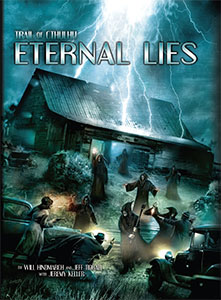
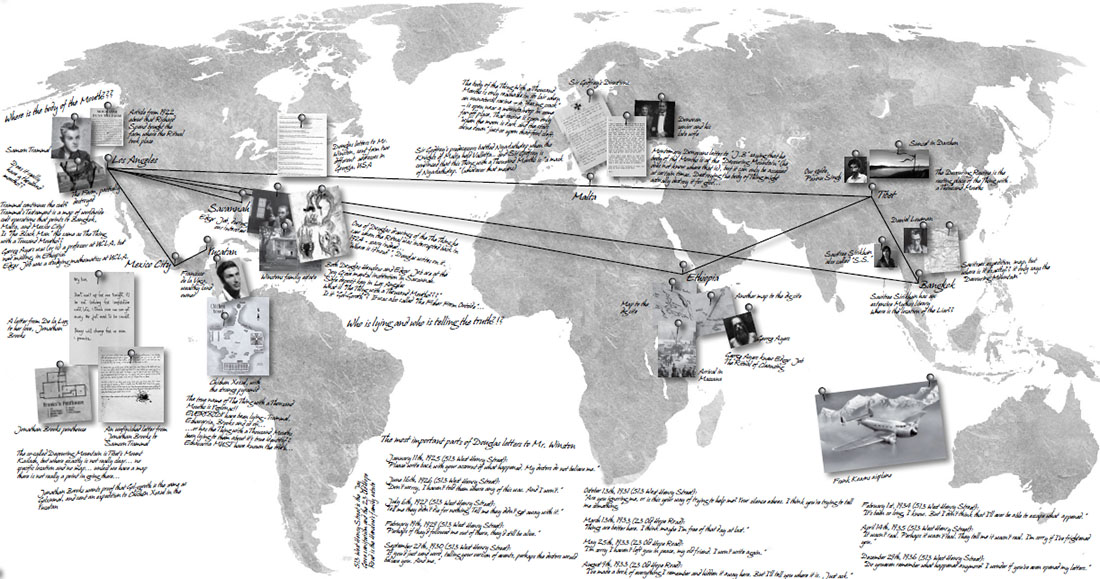
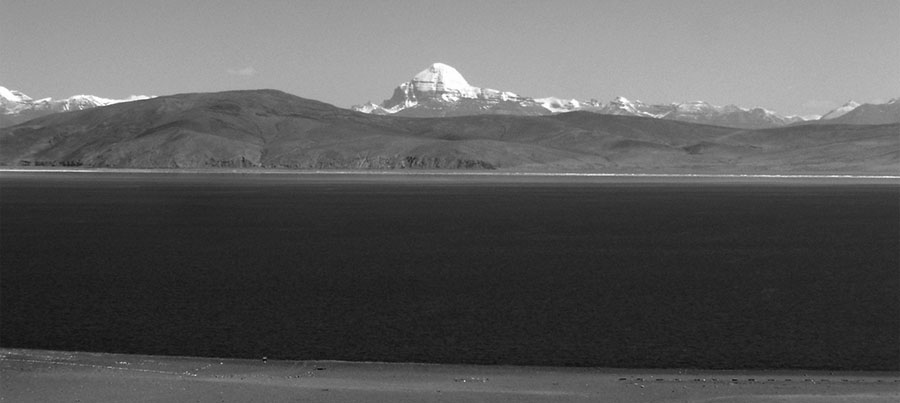
 There’s a sequence of photographic props designed for each of the routes. If you’re playing with the poster maps, you can put these travel photos directly onto the map in a rough sequence pointing towards the mountain.
There’s a sequence of photographic props designed for each of the routes. If you’re playing with the poster maps, you can put these travel photos directly onto the map in a rough sequence pointing towards the mountain.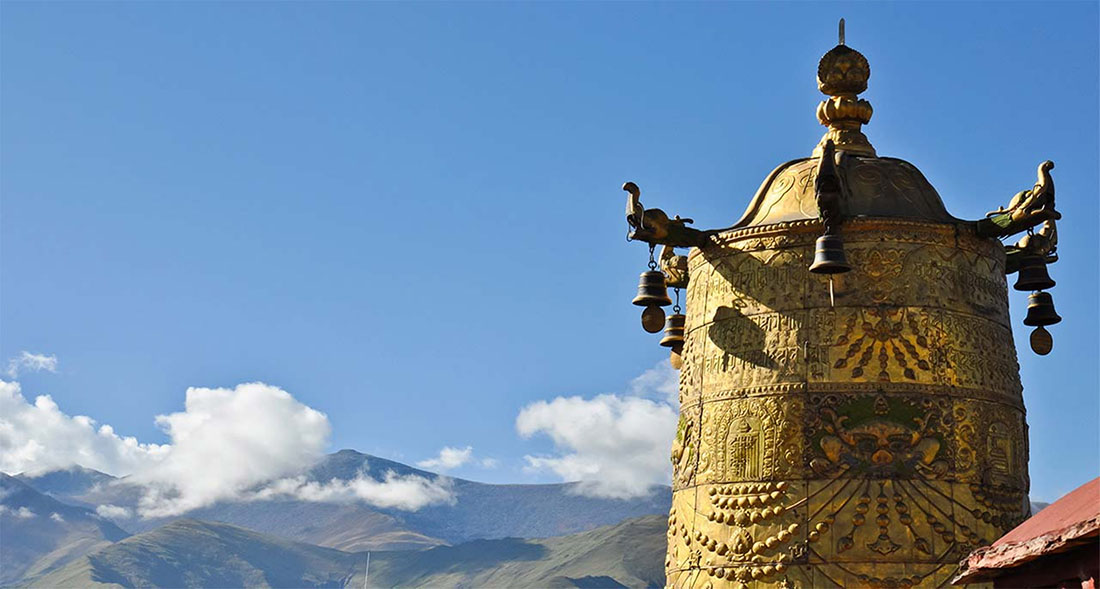
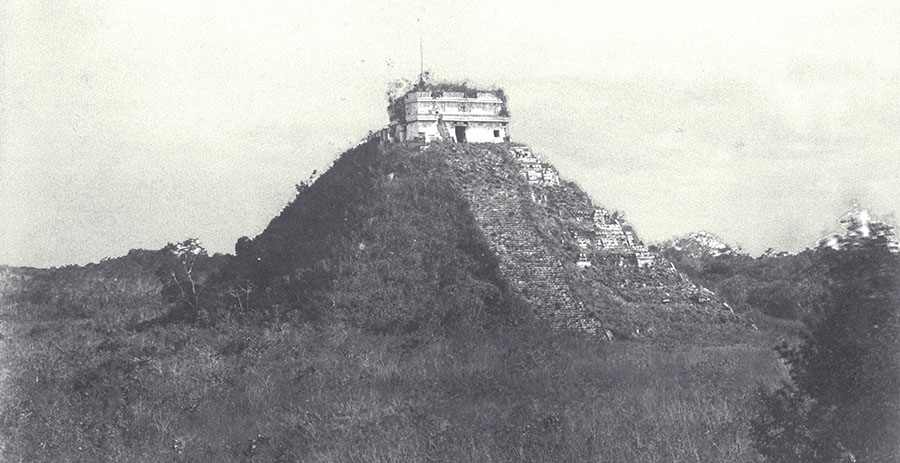
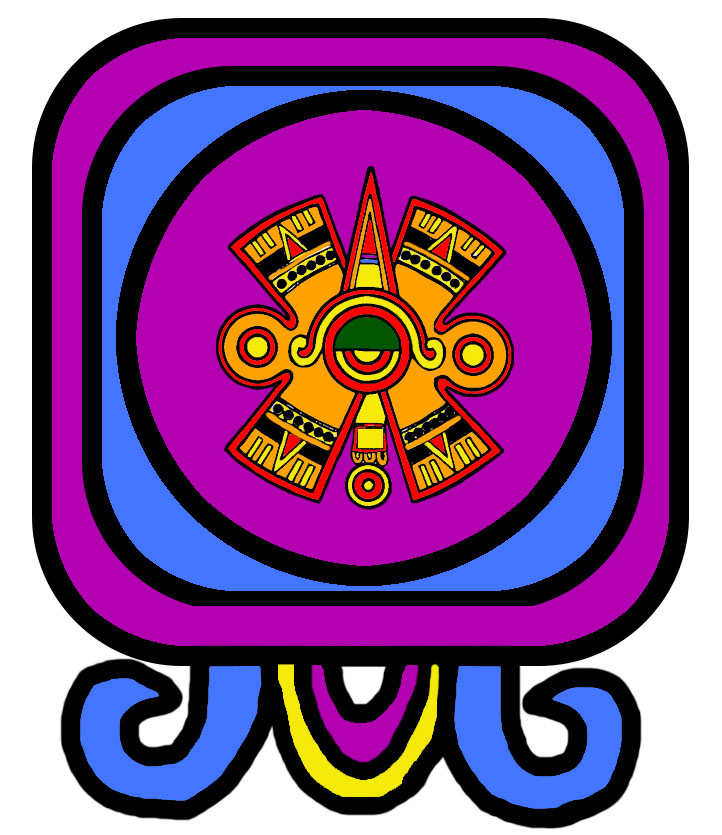 Gol-Goroth goes rummaging through the minds of the PCs and they all collectively share a set of memories as he yanks them out to look at them.
Gol-Goroth goes rummaging through the minds of the PCs and they all collectively share a set of memories as he yanks them out to look at them.
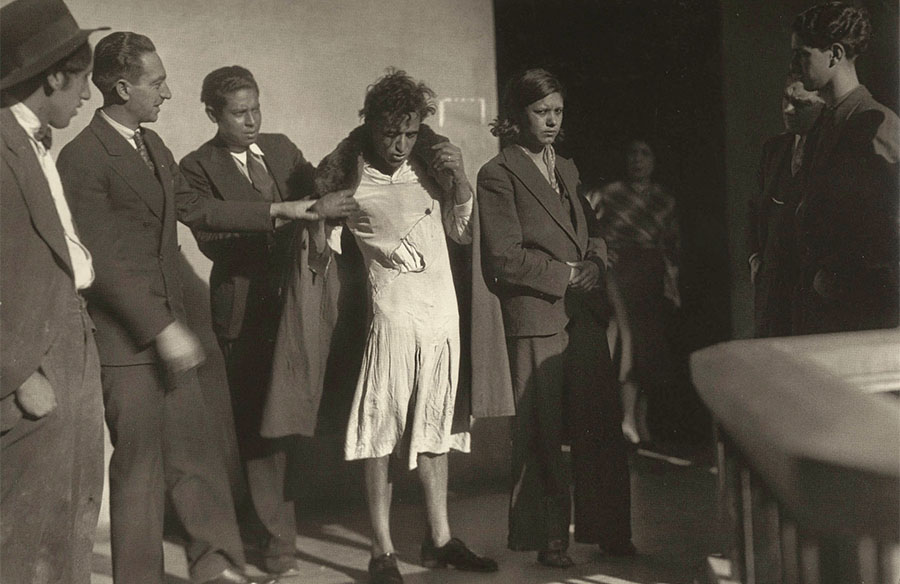
 The author then seems to realize he’s made a mistake, because he includes an entire section dedicated exclusively to discussing how to railroad the PCs back out of the trap you’ve railroaded them into in order to avoid the inevitable TPK.
The author then seems to realize he’s made a mistake, because he includes an entire section dedicated exclusively to discussing how to railroad the PCs back out of the trap you’ve railroaded them into in order to avoid the inevitable TPK.